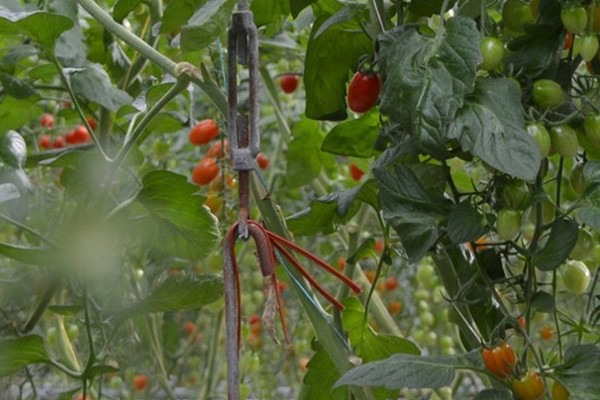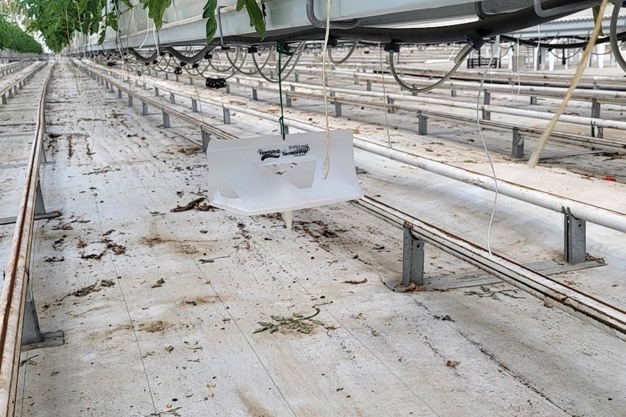Start early, preferably even before the plants start growing. That's the message from Eric Kerklaan of HortiPro to tomato growers using Isonet-T. In illuminated crops, this means that growers will already have the confusion pheromone in place, often in combination with pheromone traps with PheroTuta, and in non-illuminated crops, growers will have also already started with the pheromones. Or they will do so soon. "Most growers set up the traps with PheroTuta two weeks after planting. Isonet-T is already in place by then. Together, they form a good system against Tuta absoluta."
The crop protection specialist doesn't expect Tuta absoluta, also known as the tomato leafminer moth, to come from outside at the beginning of week 4. "But you never know what could happen in the greenhouse," he quickly adds. "Especially if you ended up with Tuta at the end of the previous season; then it could easily come back."
Eric has heard of growers who ended up with Tuta last year. "At the very end, the Isonet-T is sometimes not placed, which I think is a bad way to cut costs. If you had also had Isonet-T in place at the end, you wouldn't have had Tuta at the end of your production period."

Isonet-T is recognizable by the brown-red polymer tube from which the confusion pheromone is released.
Disaster
Growers will try to remove the Tuta absoluta from the end of the previous tomato crop during the crop rotation period, but experience says that it's not easy. "The question is where the Tuta hides. Tuta can overwinter in pupae, which have a kind of antifreeze. When the temperature rises, the antifreeze evaporates. The pupa then emerges. That's how the cycle begins. Two males are not so bad, but as soon as you have one male and one female..."
Then, a disaster can suddenly occur, in the sense that the pest will spread rapidly throughout the spring. "By placing Isonet-T, you can prevent such a disaster."
Clean
Some growers choose to spray before using biological control agents. Eric advocates doing it without spraying whenever possible and introducing the biological agents as quickly as possible, that is, Macrolophus in tomatoes, to combat Tuta. "Finish clean, start clean and on time; that's my main message."
Now, after the crop rotation and with a clean greenhouse, Eric advises checking the greenhouse for seedlings from the old crop. "As soon as a new plant grows out of it, you will see that the Tuta immediately goes there. And you don't want that. Look for old plants you might have missed and remove them immediately."

PheroTuta pheromone trap
Control
What growers want is not to have Tuta on old plants but for it to seek out the pheromone traps with PheroTuta from HortiPro. "Our PheroTuta pheromones attract both males and females." Growers are advised to start with 20 traps per hectare when planting a new crop. They need to place the traps under the cultivation gutter. "Isonet T should have also been placed already. Together with PheroTuta, this forms a system. PheroTuta helps control the effectiveness of Isonet-T. As soon as you catch one female, you know that Isonet-T is no longer working effectively."
Another necessary measure is weighing the dispensers with Isonet-T. Weigh ten every week, advises Eric. "If the weight is the same two weeks in a row, you know that the dispenser is empty. There is always evaporation."
Dutch growers may use Isonet-T three times a year. That way, they can ensure year-round use. The advice is to use 100 dispensers per 1,000 m² of cultivation area. Growers should hang the dispensers 1.50 meters above the soil in a shady, not too warm, place.
For more information:
Eric Kerklaan and Lennart Simonse
HortiPro
info@hortipro.com
www.hortipro.net
